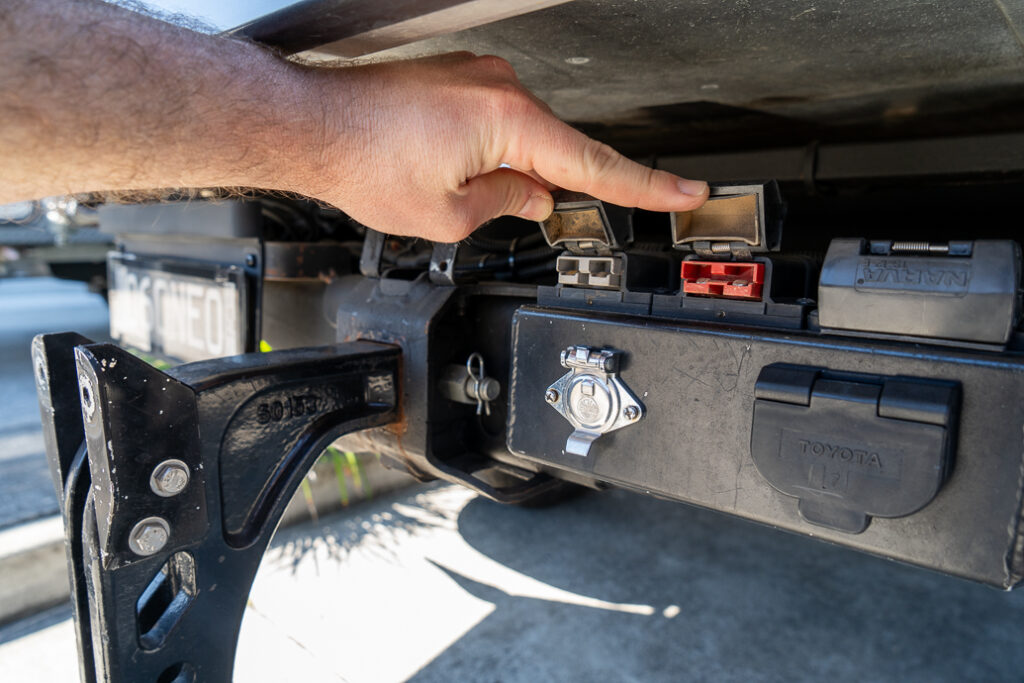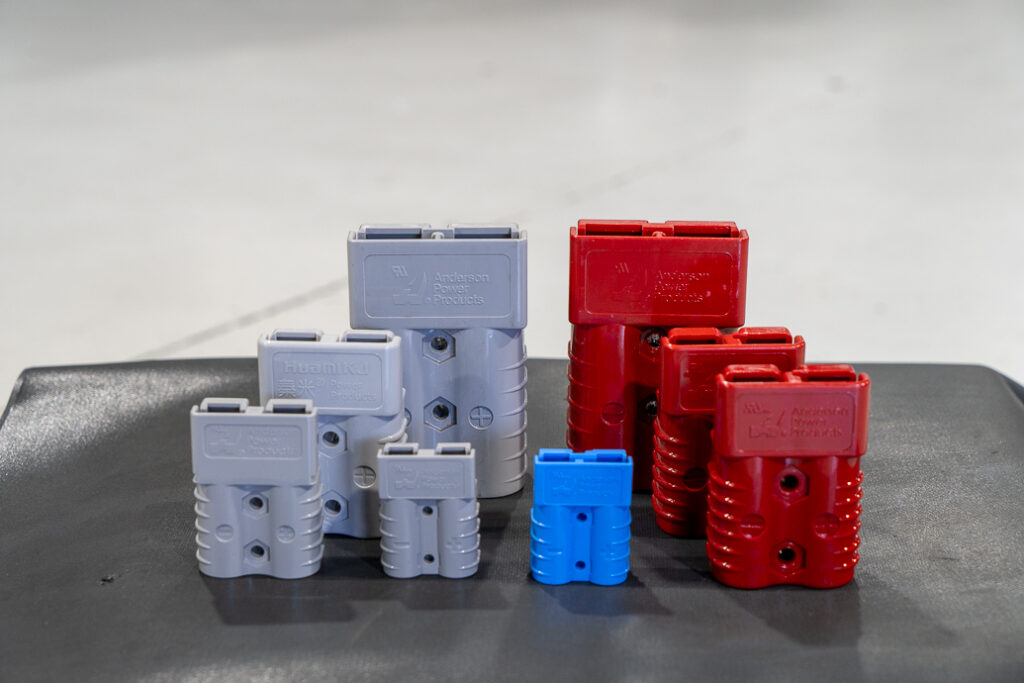What are Anderson Plugs?
If you’re considering installing a dual battery system in your vehicle or plan on towing a caravan or camper trailer, Anderson plugs are likely a familiar term. These plugs are designed specifically for connecting devices that require high current circuits making them an essential component for many automotive and camping applications. Available in a range of sizes and colours, the most commonly used Anderson plugs are the grey and red 50-amp versions, although they can handle currents up to 350 amps. The size of the plug corresponds directly to the current it needs to manage. Here is a complete guide to Anderson Plugs.
Why are Anderson Plugs Different Colours?
The different colours of Anderson plugs are not just for aesthetics; they play a crucial role in ensuring safety and functionality. The moulded plastic design of the plug will only allow you to connect your plug to another of the same colour. i.e. a red Anderson plug will only connect with another red Anderson plug, and it’s not possible to plug a red Anderson into a grey Anderson. This colour-coding system basically just ensures that you remember to plug the right accessory into the right place on your vehicle or caravan circuit.
Why are Anderson Plugs different sizes?

Anderson plugs come in different sizes to accommodate various power requirements and ensure safe, reliable connections for different applications. These versatile connectors are designed to handle a range of current capacities, from smaller 50 amp setups to more robust 350 amp systems, making them ideal for everything from small electronics to heavy-duty machinery. By offering different sizes, Anderson plugs allow for precise matching to the specific needs of your electrical system, reducing the risk of overheating or connection failure. This flexibility and safety make Anderson plugs a popular choice for both commercial and recreational use.
What are Anderson Plugs Used For? Why use Anderson Plugs?
One of the main reasons we use Anderson plugs is their ability to handle high continuous loads, which makes them perfect for use in charging circuits. For instance, a common installation we perform is using Anderson plugs to charge the auxiliary battery in a caravan or camper trailer. These plugs are typically fitted to the vehicle’s towbar, providing a convenient and efficient way to charge the battery while driving. This method is superior to running a charge feed through a 12-pin plug, which can easily become overloaded. Modern alternators often push too much current for 12-pin plugs to handle, risking overheating and melting of the pins. Anderson plugs, however, are designed to safely handle higher currents, ensuring the caravan’s batteries are consistently charged while on the move.
Anderson plugs are also popular for connecting solar panels to battery systems via a regulator. We frequently install these plugs on four-wheel drives and caravans that have dual battery systems. By placing the plugs in easily accessible locations, users can quickly connect their solar panels to top up auxiliary batteries without needing to run the vehicle. This setup is particularly useful for maintaining battery charge in remote locations where power sources may be limited.
In addition to charging and solar panel connections, Anderson plugs are commonly used for powering electronic stability control (ESC) in caravans. While ESC can be operated through a 12-pin plug, Anderson plugs offer a more secure and reliable connection, especially when driving. They are also easier to disconnect when needed, providing both safety and convenience. For those who frequently go off-road, it’s typical to use a red Anderson plug for ESC and a grey one for the charging system. This colour differentiation ensures that users can quickly identify and correctly connect the plugs, minimising errors and ensuring a smooth operation.
The design of Anderson plugs makes them a superior choice for powering high-draw 12-volt accessories such as fridges and air compressors. Compared to the standard 12-volt cigarette lighter sockets, Anderson plugs offer a much more reliable and secure connection, which is crucial for equipment that demands consistent power supply. Their durability and secure locking mechanism make them ideal for rugged environments and off-road adventures, where reliability is a top priority. As an example, you could replace the cig plug on your 12v electric blanket, fan, or fridge with an Anderson Plug for a more reliable and study connection.
Can Anderson Plugs Get Wet?
Anderson plugs are designed to withstand challenging environments, offering resistance to both dust and moisture. This makes them ideal for use in a wide range of weather conditions, including exposure to rain and water splashes. While they are generally effective at staying dry and operational, adding extra protection can be beneficial. For customers who need complete sealing, Andersen Plugs can be housed in fully waterproof enclosures. This ensures maximum protection against moisture, helping to prevent corrosion and extending the lifespan of the plugs. Regular inspections for signs of rust or wear are also recommended to maintain their performance and reliability over time.
At Sandgate Auto Electrics and Automotive Services, we provide comprehensive Auto Electrical, Mechanical and Automotive services in Brisbane North and the Moreton Bay Region. Whether you need a guide to Anderson Plugs installation, dual battery systems, or a full off-grid 12v power solution to tour Australia, we’ve got you covered.
If you have any questions or need further assistance, feel free to reach out, and we’ll be happy to help.
Sandgate Auto Electrics & Automotive Services
Useful Resources:
Dual Battery Setup with Invicta Super Slim Lithium Battery
Simple Tips to make your car battery last longer
Extend your Off-Grid Adventures with a Lithium Battery and Solar Upgrade

